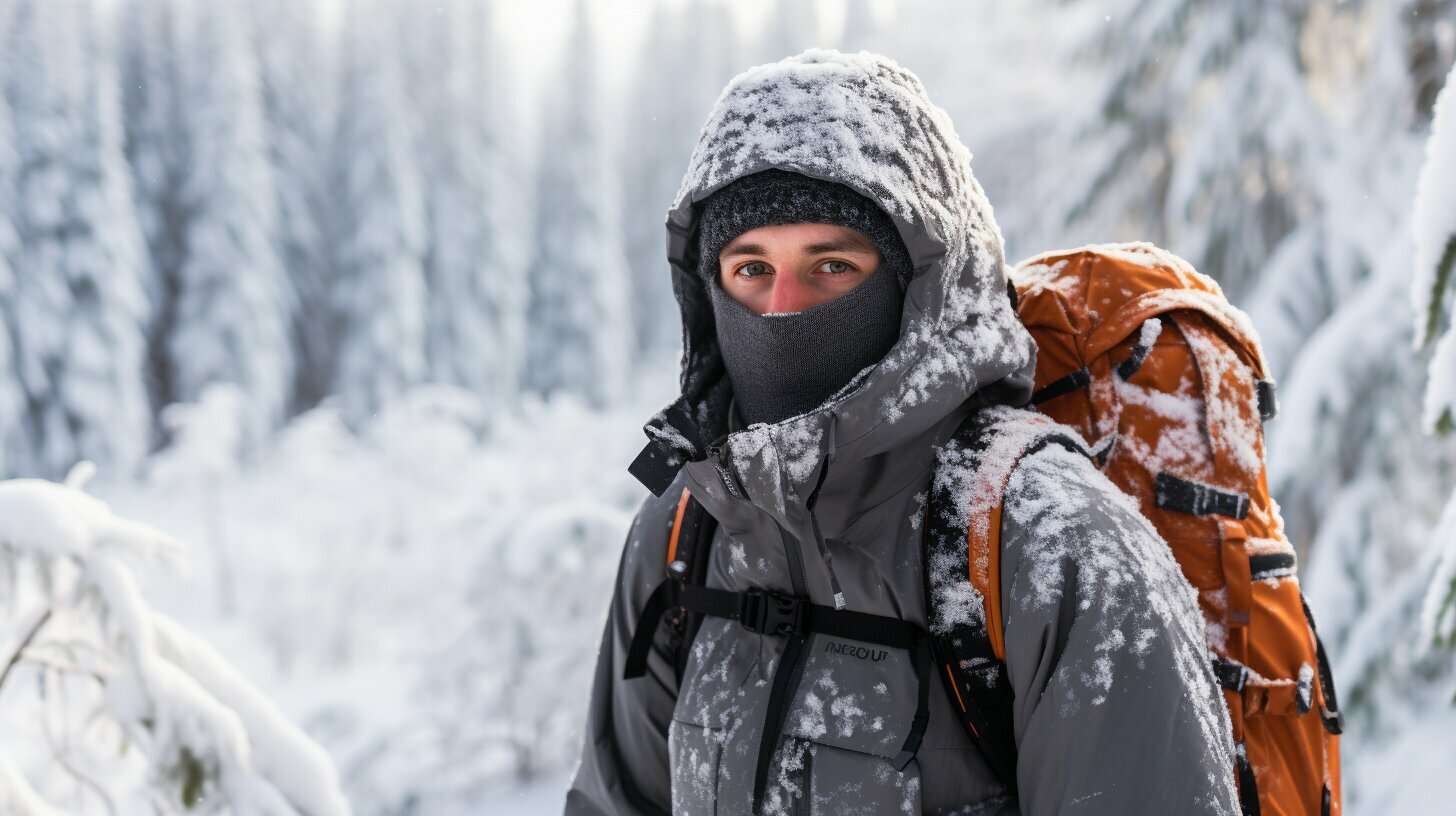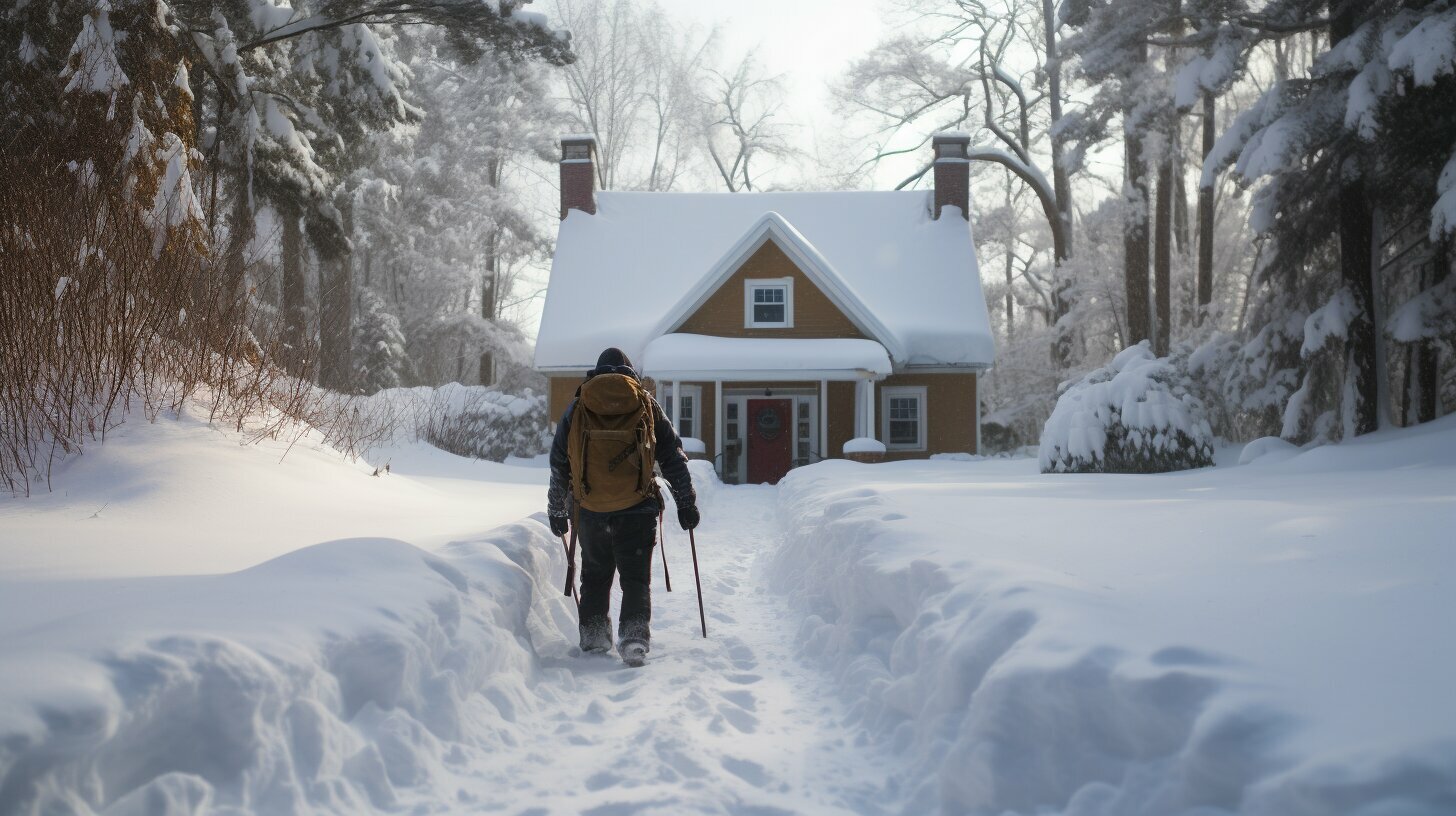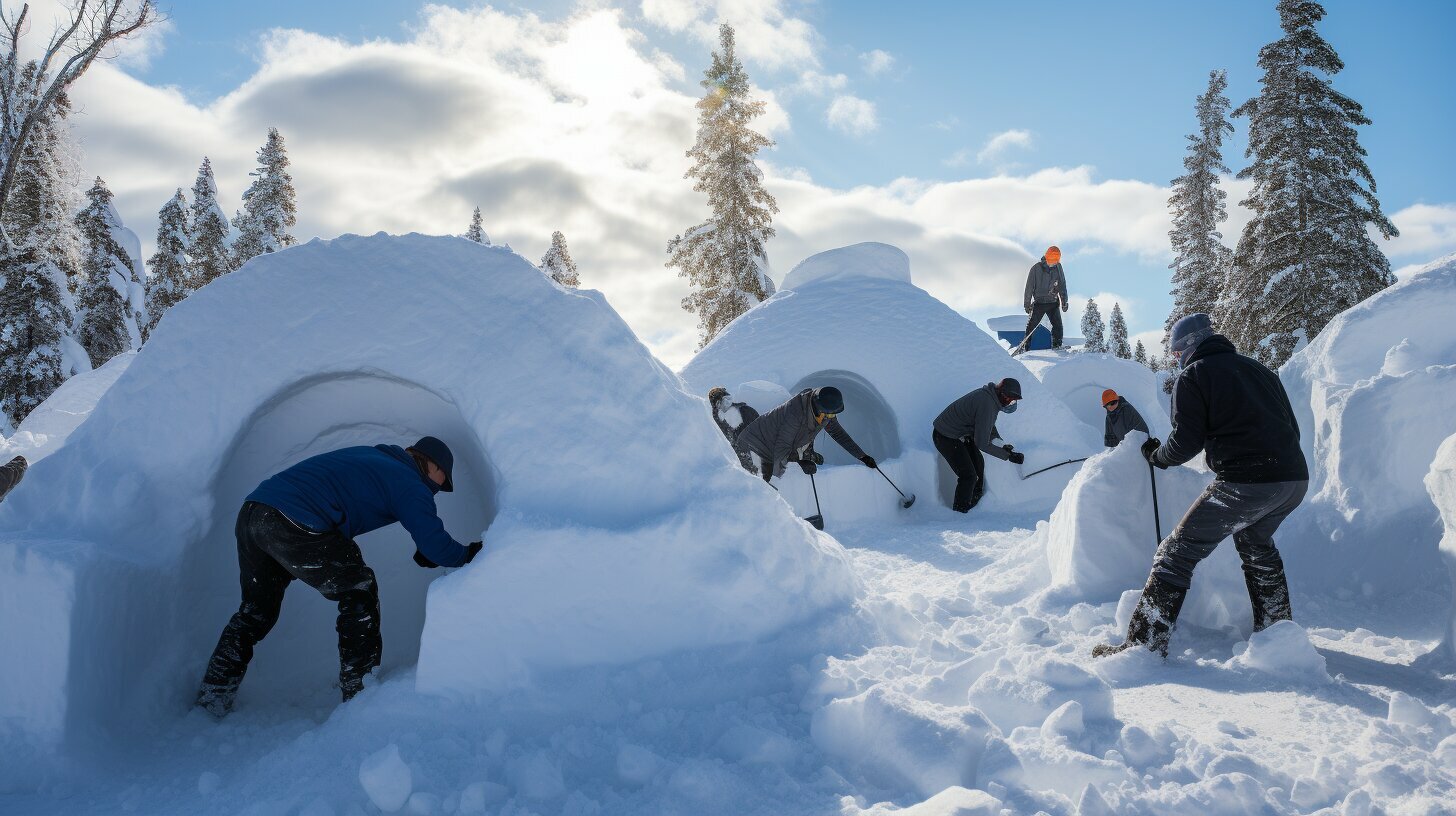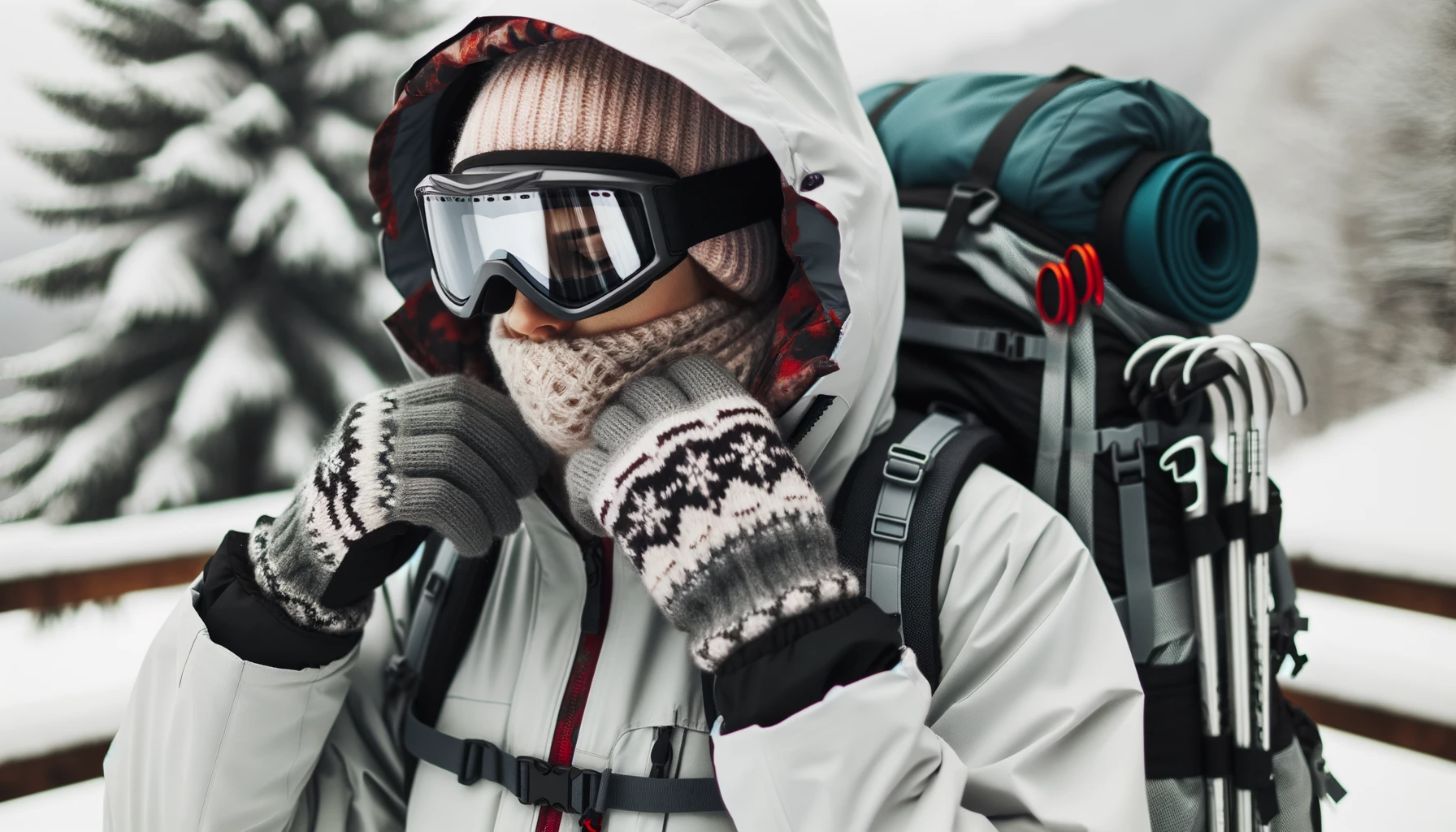Winter can be a beautiful season, but it also brings some dangers, such as frostbite and hypothermia. These conditions occur when the body’s core temperature drops too low, causing damage to the skin and internal organs. It’s important to take steps to protect yourself from these cold-related injuries. With the right knowledge and preparation, you can stay safe and warm in extreme cold weather.
Key Takeaways
Disclosure: When you buy through links on our site, we may earn an affiliate commission.
- Know the signs and symptoms of frostbite and hypothermia to take action early.
- Dress properly in layers and choose the right materials to stay warm.
- Take safety precautions when outdoors in winter, such as avoiding overexertion and staying hydrated.
- Learn essential winter survival skills, such as building shelters and finding water sources.
- Have a winter emergency kit ready with essential items such as extra clothing, blankets, food, water, and communication devices.
Understanding Frostbite and Hypothermia
Winter weather can be dangerous, and it’s important to understand the signs and symptoms of frostbite and hypothermia. Frostbite is a condition where the skin and underlying tissues freeze due to cold temperatures, while hypothermia occurs when your body temperature drops to a dangerous level. Both conditions can be serious and should be treated as medical emergencies.
Some common signs and symptoms of frostbite include:
- Loss of feeling in the affected area
- Skin that appears white or grayish-yellow
- Skin that feels unusually firm or waxy
- Numbness
Symptoms of hypothermia can include:
- Shivering
- Slurred speech or mumbling
- Slow, shallow breathing
- Weak pulse
- Clumsiness or lack of coordination
- Drowsiness or very low energy
- Confusion or memory loss
Frostbite and Hypothermia Prevention Techniques
The best way to prevent frostbite and hypothermia is by wearing appropriate clothing and gear and staying dry. It’s also important to avoid overexertion in cold weather and to stay hydrated. If you do experience symptoms of frostbite or hypothermia, seek medical attention immediately.
When spending time outdoors in cold weather, keep these prevention techniques in mind:
- Dress in layers
- Wear a hat and gloves
- Choose synthetic materials or wool for clothing
- Keep clothing dry
- Stay out of the wind as much as possible
- Avoid alcohol and caffeine, as they can increase heat loss
By taking these simple precautions, you can avoid the dangers of frostbite and hypothermia and enjoy the winter season safely.
Dressing for Extreme Cold Weather
When it comes to staying warm in extreme cold weather, proper clothing and gear are essential. By following these winter safety tips, you can protect yourself from cold-related injuries and prevent frostbite and hypothermia.
Layer Up
Layering your clothing is the best way to stay warm in cold weather. This technique allows you to add or remove layers as needed to regulate your body temperature. Start with a base layer made of moisture-wicking material to keep sweat away from your skin. Add a middle layer made of insulating material, like fleece or down. Finally, top it off with a waterproof and windproof outer layer.
Choose the Right Material
Not all materials are created equal when it comes to cold weather clothing and gear. Avoid cotton, which traps moisture and can lead to hypothermia. Instead, opt for materials like wool, synthetic fabrics, and down. These materials are better at retaining heat and keeping you warm.
Don’t Forget the Accessories
In addition to your layers, certain accessories can help keep you warm in extreme cold weather. A warm hat, scarf, and gloves are essential for keeping your head, neck, and hands protected from the cold. Consider investing in insulated boots and thick socks to keep your feet warm and dry.
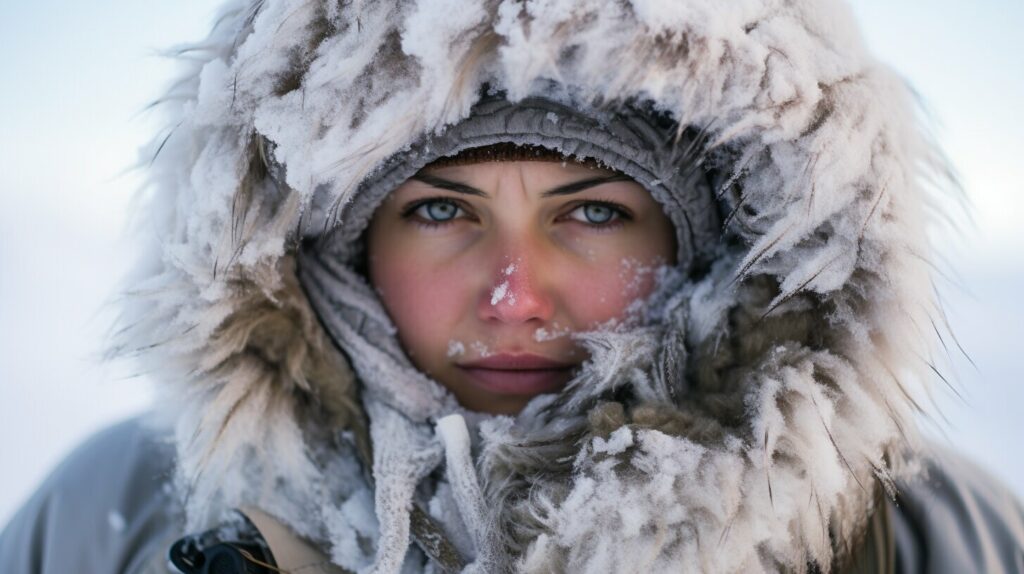
By following these winter safety tips and dressing appropriately for the weather, you can enjoy the great outdoors while staying warm and protected from the elements.
Protecting Yourself Outdoors
When you’re outdoors in winter, it’s essential to take precautions to protect yourself from frostnip and other cold-related injuries. By following these winter safety tips, you can stay safe and warm no matter how cold it gets outside.
Choosing the Right Clothing
One of the most important things you can do to protect yourself from the cold is to choose the right clothing. Dressing in layers is the key to staying warm and dry. Your base layer should be made of moisture-wicking material like wool or synthetic blends to keep sweat away from your skin. Your mid-layer should add insulation, while your outer layer should protect you from wind and rain.
Accessories like hats, scarves, and gloves are also essential for keeping warm and preventing frostnip. Make sure your clothing and accessories are also brightly colored or reflective to improve visibility in low-light conditions.
Staying Hydrated and Nourished
Dehydration is a common issue in the winter as the dry air can cause you to lose more water through breathing and sweating. Drinking plenty of water and warm liquids like tea or soup can help you stay hydrated. It’s also essential to eat high-energy foods to keep your body fueled and warm, such as nuts, fruits, and root vegetables.
Avoiding Overexertion
When you’re active in the cold, it’s easy to overexert yourself and sweat too much. This can cause you to lose body heat and lead to hypothermia. Take breaks often and listen to your body. If you start to feel too hot, shed some layers or take a rest.
Recognizing the Signs of Frostnip and Hypothermia
The final step to protecting yourself from frostnip and cold-related injuries is to recognize the signs and symptoms. Frostnip is the first stage and can cause numbness and tingling in your fingers, toes, ears, or nose. Hypothermia is more serious and can cause confusion, dizziness, and difficulty speaking. If you notice any of these symptoms, head inside immediately, remove wet clothing, and warm up with blankets and hot liquids.
By following these winter safety tips, you can stay safe and warm while enjoying the great outdoors in winter.
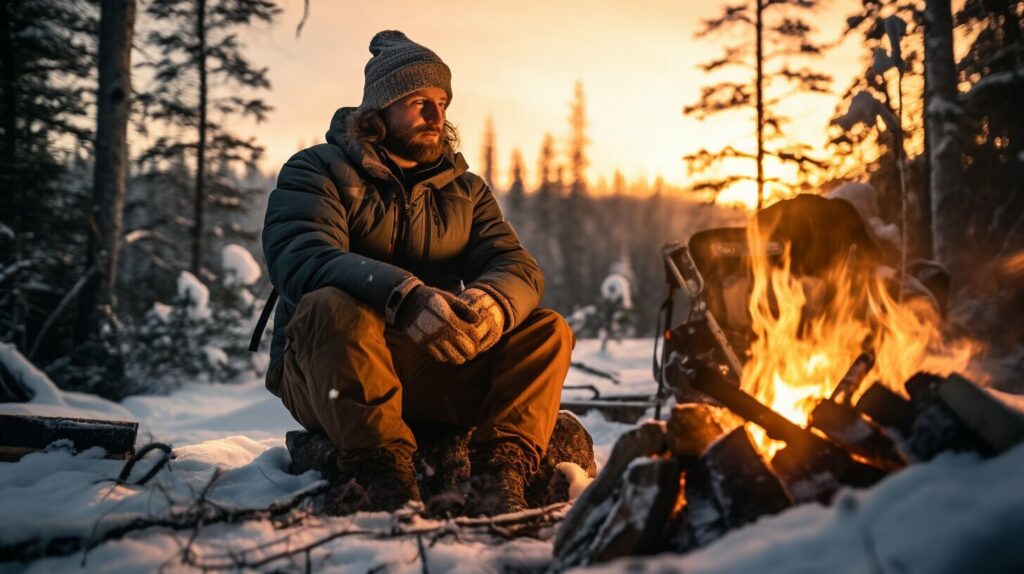
Building Winter Survival Skills
Winter weather can be unpredictable, and you never know when you might find yourself in a survival situation. By learning some basic winter survival skills, you can be better prepared to handle whatever comes your way. Here are some tips to get you started:
Building a Shelter
Creating a shelter can help protect you from the elements and keep you warm. Look for a dry, protected area and use materials like branches, leaves, and snow to build a shelter. You can also use a tarp or emergency blanket to create a makeshift shelter if needed.
Starting a Fire
A fire can provide warmth, light, and can be used to melt snow for drinking water. Make sure to gather dry kindling and firewood, and use a firestarter or matches to get your fire going.
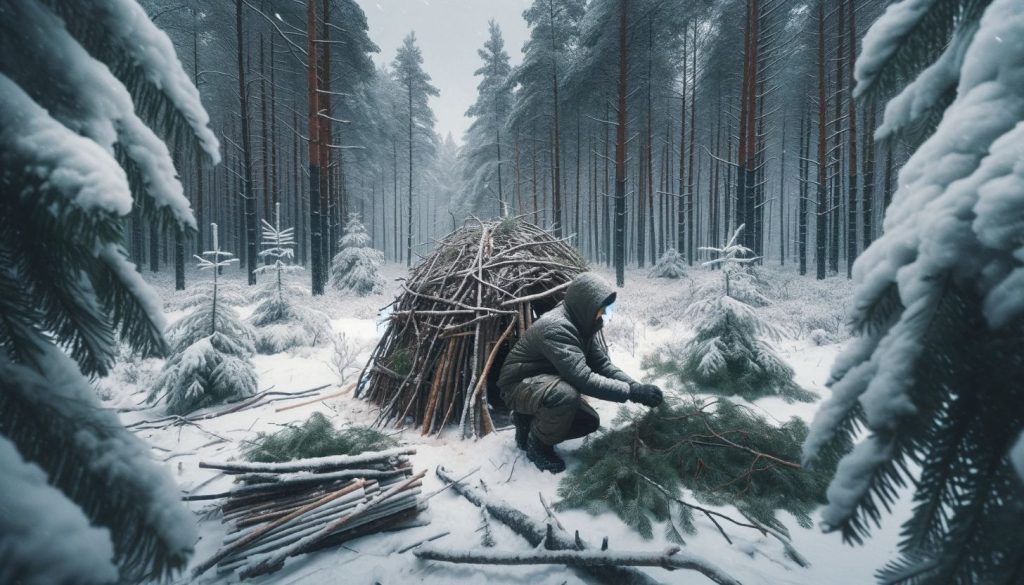
Finding Water
One of the most important survival skills is finding water. Look for sources of water such as streams or lakes, and use a water purification method such as boiling or using water purification tablets to make the water safe to drink.
Navigating in Snow and Ice
If you need to travel in winter weather, it’s important to know how to navigate through snow and ice. Use landmarks and maps to help guide you, and consider using snowshoes or skis to make travel easier.
Gathering Food
Although it’s not always necessary, knowing how to find and gather food can be a useful survival skill. Look for edible plants and berries, and consider using traps or fishing gear to catch fish and other animals.
By learning and practicing these winter survival skills, you can increase your chances of staying safe and comfortable in cold weather. Remember to always be prepared and stay aware of your surroundings.
Creating a Winter Emergency Kit
When venturing outdoors in winter, it’s essential to be prepared for any emergency situation. That’s why creating a winter emergency kit is crucial. You never know what might happen, and having the right supplies can make all the difference in staying safe during an unexpected turn of events.
Here are some winter safety tips to help you create your winter emergency kit:
- Extra Clothing: Pack warm clothing, such as waterproof jackets, thick socks, and insulating layers. You might also want to consider packing extra gloves, hats, and scarves.
- Blankets: In the event that you need to spend the night outdoors, pack one or two blankets to keep warm.
- Food and Water: Non-perishable food items, such as energy bars or canned goods, and bottled water can help sustain you in the event that you’re stuck outdoors for an extended period.
- Emergency Communication Devices: You’ll need a way to call for help in case of an emergency. A fully charged cell phone or two-way radio can come in handy.
- First Aid Kit: It’s always a good idea to have a basic first aid kit with items such as bandages, gauze, and antiseptic wipes.
A winter safety tip to keep in mind is to store your emergency kit in a waterproof container and keep it within reach. You never know when you might need it, and having it easily accessible could help save your life.
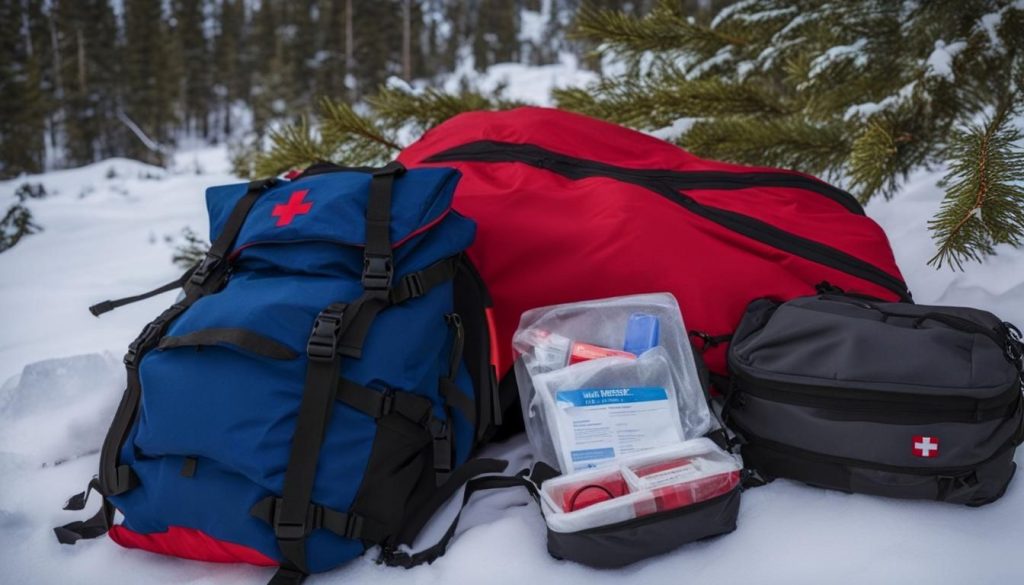
Recognizing and Responding to Cold Weather Emergencies
Despite taking all necessary precautions, emergencies can occur while you’re outdoors in winter. Knowing how to recognize and respond to these situations can make all the difference. Here are some essential winter safety tips to help you stay safe outdoors in winter:
- Recognize the signs of hypothermia: Hypothermia is a serious medical emergency that occurs when your body temperature drops below 95°F. Symptoms of hypothermia include shivering, confusion, drowsiness, slurred speech, and loss of coordination. If you or someone in your group experiences these symptoms, move to a warm, dry place immediately and seek medical attention.
- Learn hypothermia first aid: If someone is experiencing hypothermia, it’s important to take steps to warm them up slowly. Remove wet clothing and wrap them in warm blankets or sleeping bags. Offer them warm fluids, but avoid alcohol and caffeine. If they’re unconscious or have a weak pulse, seek medical attention immediately.
- Know how to signal for help: If you’re in an emergency situation and need assistance, there are several ways to signal for help. You can use a whistle, mirror, or bright clothing to attract attention. If you have a cell phone, try calling for help, but be aware that cell service may be unreliable in remote areas.
- Plan for emergencies: Always carry a winter emergency kit with you when venturing out in winter. Your kit should include extra clothing, blankets, food, water, and emergency communication devices. Make sure someone knows your planned route and expected return time. If you’re going on a longer trip, consider bringing a GPS device or map and compass.
Remember, staying safe outdoors in winter requires proper planning, preparation, and awareness of your surroundings. By following these winter safety tips, you can protect yourself and your loved ones from the dangers of cold weather.
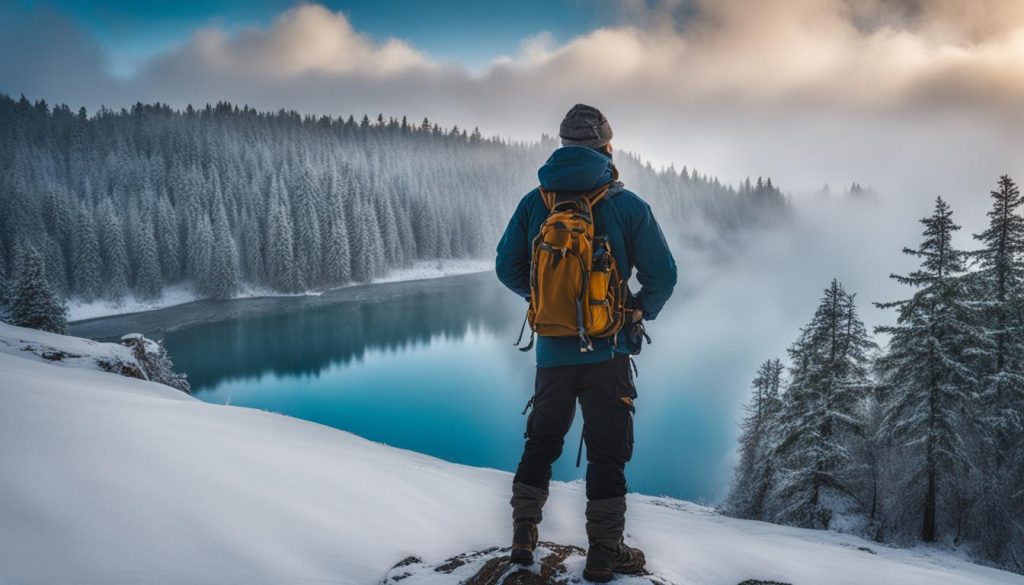
Staying Safe at Home during Cold Weather
Winter weather can be unpredictable, and it’s important to take precautions to keep yourself and your family safe at home. Here are some winter safety tips to consider:
- Keep your home heated to at least 68 degrees Fahrenheit and have a backup heating source, such as a generator or wood stove, in case of a power outage.
- Seal any cracks or gaps around windows and doors to prevent drafts and keep warm air inside.
- Make sure your home’s insulation is up to date and consider adding extra insulation in areas where heat can escape.
- Keep your pipes from freezing by insulating them and leaving faucets dripping.
- Have emergency supplies on hand, such as blankets, flashlights, batteries, and non-perishable food.
By following these winter safety tips, you can help prevent cold weather-related emergencies at home.
Gearing Up for the Outdoors
While it’s important to stay safe at home during cold weather, it’s equally important to stay safe when venturing outdoors. Here are some tips to consider:
- Dress in layers, making sure to cover your head, face, and hands.
- Wear appropriate footwear with good traction to prevent slipping on ice or snow.
- Cover any exposed skin with a scarf or mask to prevent frostnip or frostbite.
- Stay hydrated by drinking plenty of fluids, even if you don’t feel thirsty.
- Take frequent breaks and avoid over-exerting yourself, especially if you feel cold or tired.
- Carry a fully charged cell phone and emergency supplies, such as a flashlight, extra clothing, and non-perishable food.
By following these winter safety tips, you can help protect yourself from cold-related injuries and emergencies when enjoying the outdoors in winter.
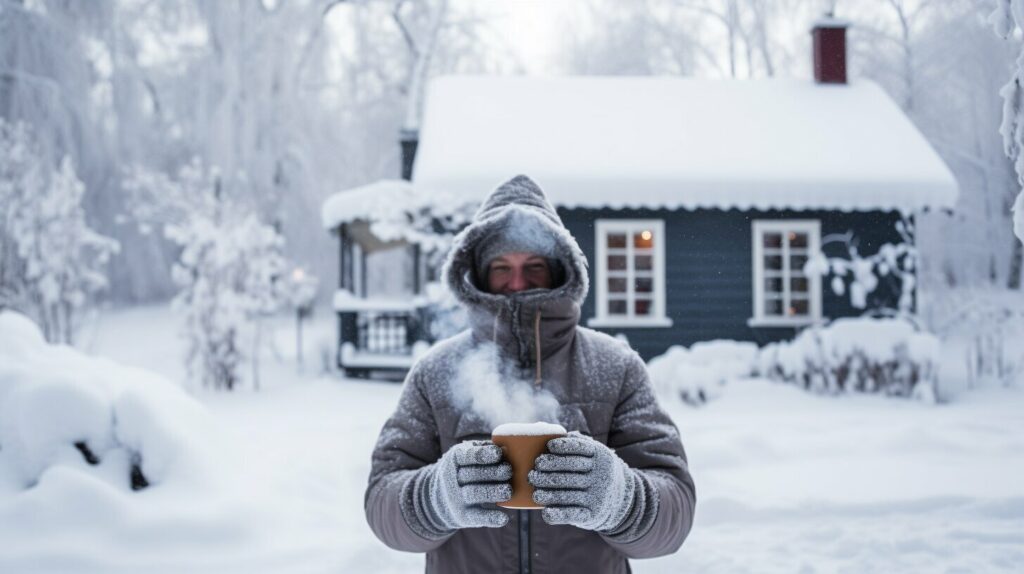
“Winter is not a season, it’s a celebration.” – Anamika Mishra
Conclusion
You now have a solid understanding of winter safety tips, staying warm in extreme cold weather, and winter survival skills. By following the advice in this article, you can protect yourself from frostbite and hypothermia while enjoying the great outdoors during the winter months.
Remember to dress appropriately for the cold, with layers of clothing made from materials like wool and fleece. Be sure to stay hydrated, well-fed, and aware of early signs of frostnip and hypothermia. Build your winter survival skills by learning how to build shelters, start fires, find water sources, and navigate through snow and ice.
To stay safe during cold weather, it is important to stay informed about changing weather conditions and potential hazards. Check local weather reports regularly and stay up-to-date on emergency alerts in your area. Remember to create a winter emergency kit and be prepared for power outages and other emergencies.
By taking these precautions, you can enjoy the beauty and excitement of winter without putting yourself at risk. Stay warm, stay safe, and have a great winter season!
FAQ
What are the signs and symptoms of frostbite and hypothermia?
The signs and symptoms of frostbite include numbness, tingling, pale or waxy skin, and blistering. Hypothermia symptoms include shivering, confusion, drowsiness, and loss of coordination.
How can I prevent frostbite and hypothermia?
To prevent frostbite and hypothermia, it is important to dress in layers, cover exposed skin, and avoid prolonged exposure to cold temperatures. It is also important to stay hydrated and seek shelter if necessary.
What should I wear in extreme cold weather?
When dressing for extreme cold weather, it is important to wear multiple layers of clothing, including a base layer, an insulating layer, and an outer layer that is windproof and water-resistant. It is also important to wear a hat, gloves, and warm, waterproof boots.
How can I stay safe outdoors in winter?
To stay safe outdoors in winter, it is important to avoid overexertion, stay hydrated, and be aware of early signs of frostnip, such as numbness or whitening of the skin. It is also important to be cautious of slippery surfaces and to dress appropriately for the weather.
What are some winter survival skills I should know?
Some winter survival skills include building shelters, starting fires, finding water sources, and navigating through snow and ice. It is also important to know how to recognize and treat cold weather injuries, such as frostbite and hypothermia.
What should I include in a winter emergency kit?
A winter emergency kit should include extra clothing, blankets, food, water, emergency communication devices, and any necessary medications. It is also recommended to have a flashlight, batteries, and a portable phone charger.
How should I respond in a cold weather emergency?
In a cold weather emergency, it is important to seek shelter, stay dry, and keep warm. If someone is experiencing symptoms of hypothermia, it is important to seek medical help immediately. If necessary, use emergency signaling devices or call for help.
What safety measures should I take at home during cold weather?
To stay safe at home during cold weather, make sure your home is properly heated and insulated. Prevent frozen pipes by insulating them and keeping a slow drip of water flowing. Have emergency supplies, such as blankets, flashlights, and non-perishable food, in case of power outages.

